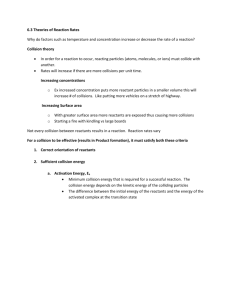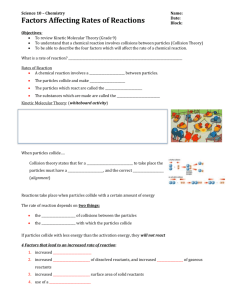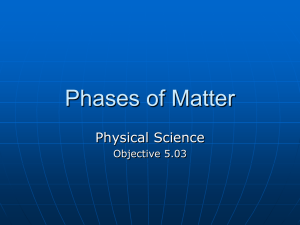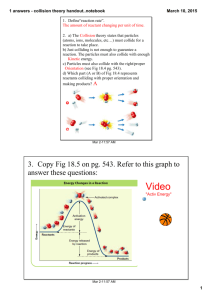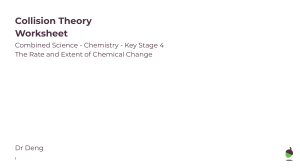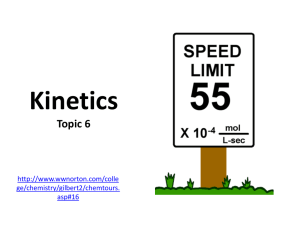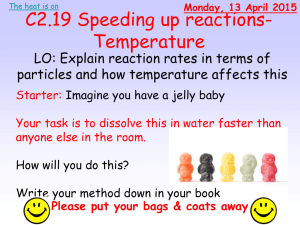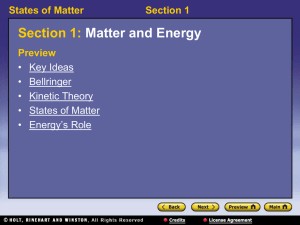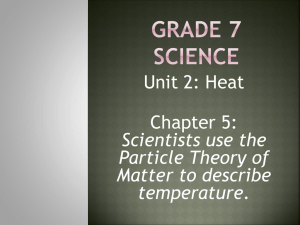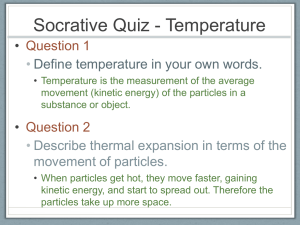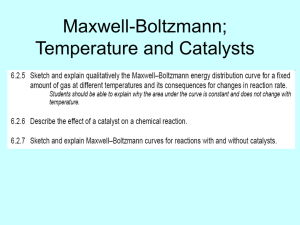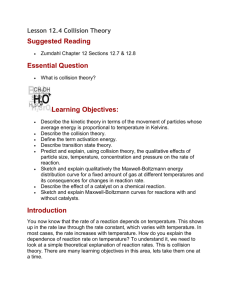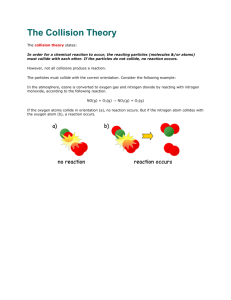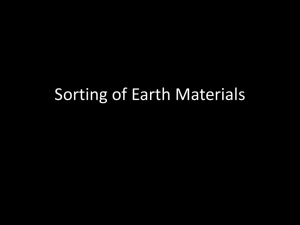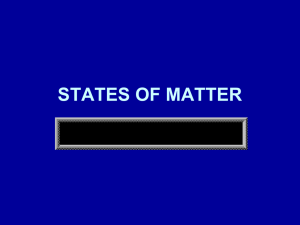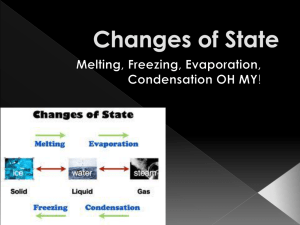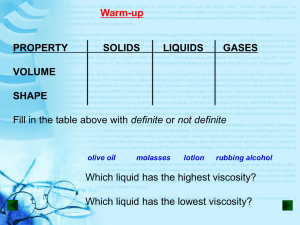2.2.3 ppt - Prairie Spirit Blogs
advertisement
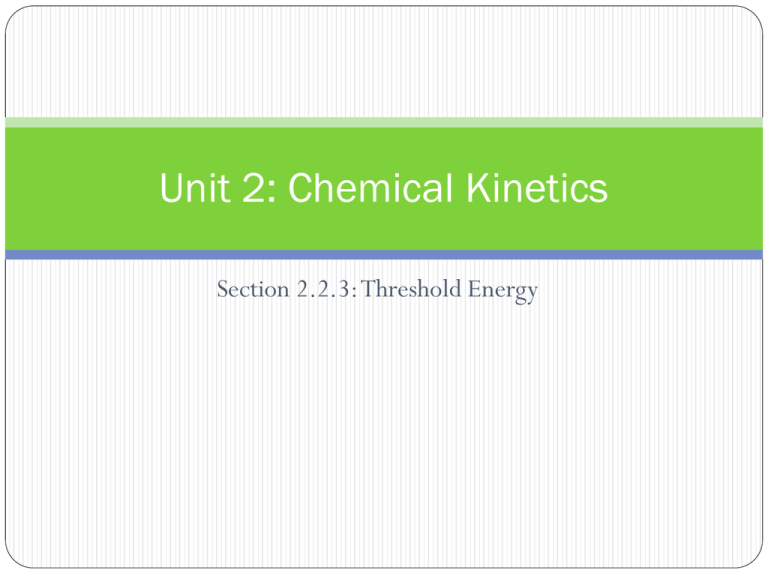
Unit 2: Chemical Kinetics Section 2.2.3: Threshold Energy 2.2.3 Threshold Energy Let's return to one of the key points of the collision theory - reacting particles must collide with sufficient force or energy. Consider two cars about to become involved in an accident. If both cars are moving very slowly, say 2 km/hr when they collide, not much is going to happen. Perhaps the drivers don't even realize they've hit one another. But if the cars are both travelling at 40 km/hr (greater speed= more energy), then the collision is going to be effective and damage will be done. In our scenario there is a certain speed at which damage will be done to the cars. In chemistry, we call this minimum amount of energy required for particles to collide successfully activation energy. Activation energy is the minimum amount of energy required for a successful collision. Symbol: Ea Sometimes referred to as threshold energy. Recall a kinetic energy diagram from the last unit This graph illustrates that some particle have a low amount of kinetic energy (yellow region), some have a lot of kinetic energy (blue), while most particles have some intermediate amount of kinetic energy (purple). Graph #1 Threshold energy is the minimum amount of energy needed for particles to react. For a particular reaction, the threshold energy might be as shown here: Only particles that have the required threshold energy will have enough energy to have a successful collision. Only particles in the green area of the graph will actually react because these are the only particles with enough energy Graph #2 In this graph, the threshold energy is lower so more particles meet this minimum requirement, and more will successfully collide. This means that this reaction will have a faster rate. Assignment Assignment 2.2.3

